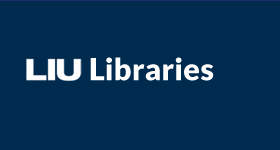Date of Award
2025
Document Type
Dissertation
Degree Name
Doctor of Philosophy (PhD)
First Advisor
Heting Chu
Second Advisor
David Jank
Third Advisor
David Jalajas
Abstract
When neurodivergent students attempt to go to colleges and universities, they often face barriers in accessing higher education and encounter challenges post-admission. This study explores what measures higher learning institutions can develop and implement to make postsecondary education more accessible and less challenging for neurodivergent students by answering the following questions: • What barriers do neurodivergent students face when planning to access higher education? • What challenges do neurodivergent students encounter in higher education after they are admitted? • What measures can be developed and implemented to help neurodivergent students access and succeed in higher education? To address these questions, content analyses were performed on data collected from three sources: information for neurodivergent students on the websites of 20 higher learning institutions randomly chosen from the ranked list published by the U.S. News and World Report, 150 articles from three major journals published between 2015 and 2024 on neurodivergent students and higher education, and materials put out by an advocacy organization for neurodivergent students. This study demonstrates that significant barriers continue to restrict access for neurodivergent students in higher education, particularly in administrative processes, legal and policy frameworks, and resource availability. While challenges are widely recognized, institutional measures remain reactive, inconsistent, and overly reliant on one-size-fits-all accommodations. The analysis confirms that barriers, challenges, and measures are interconnected, yet most institutional responses target challenges after enrollment rather than proactively removing barriers to access. To address these shortcomings, this research recommends: refining and clarifying institutional language to support individualized approaches, leveraging libraries as hubs for inclusion, improving pre-enrollment transparency and accessibility messaging, and strengthening transition planning in collaboration with high schools. These actions are essential for higher education institutions to move beyond reactive compliance toward proactive, systemic inclusion that addresses both academic and social needs and fulfills the promise of equitable access for all learners.
Recommended Citation
Tricarichi-Funk, Courtney, "Neurodivergent Students and Higher Education: Barriers, Challenges, and Supporting Measures" (2025). Selected Full Text Dissertations, 2011-. 122.
https://digitalcommons.liu.edu/post_fultext_dis/122
Included in
Educational Assessment, Evaluation, and Research Commons, Higher Education Commons, Library and Information Science Commons, Special Education and Teaching Commons
